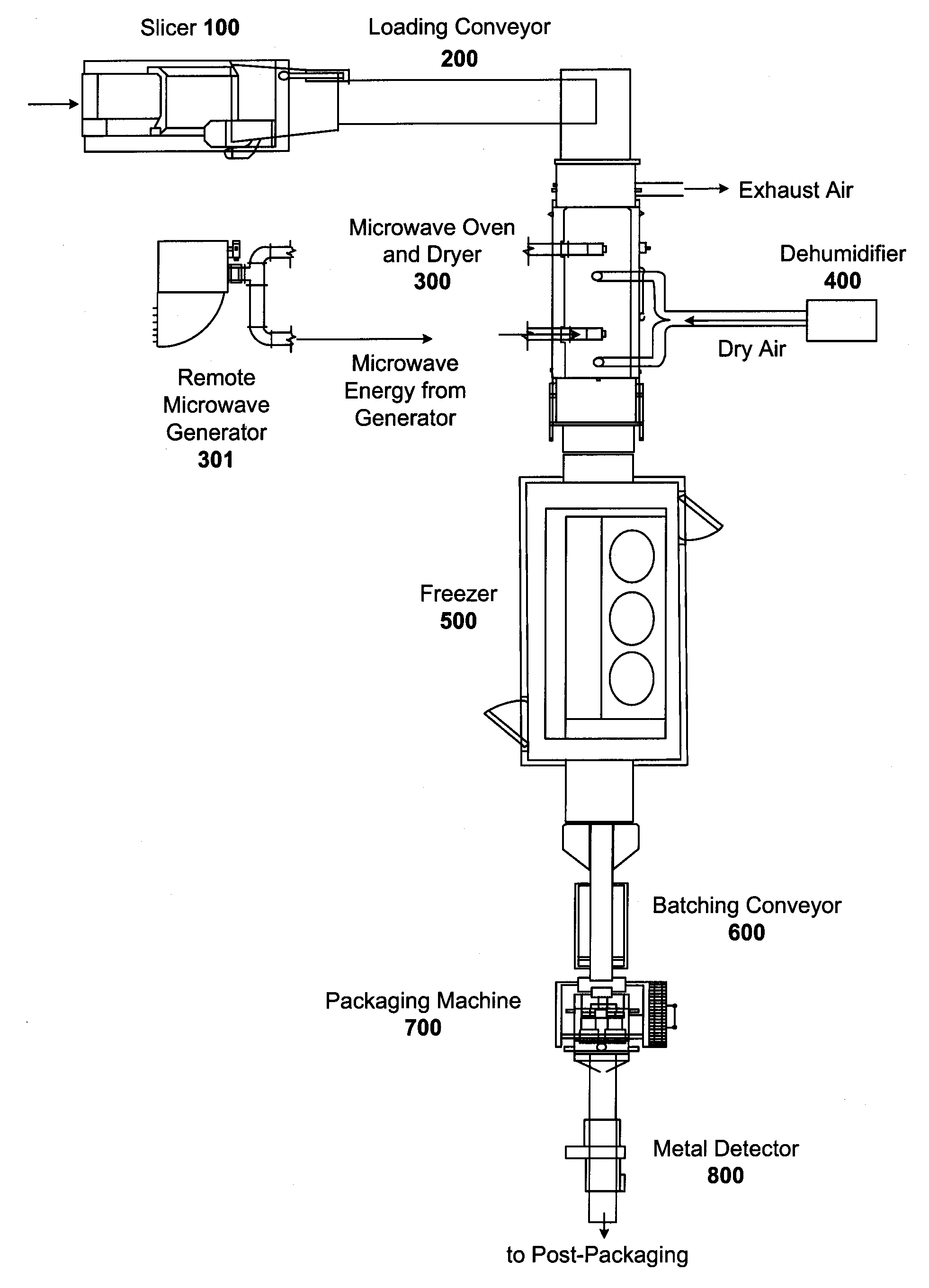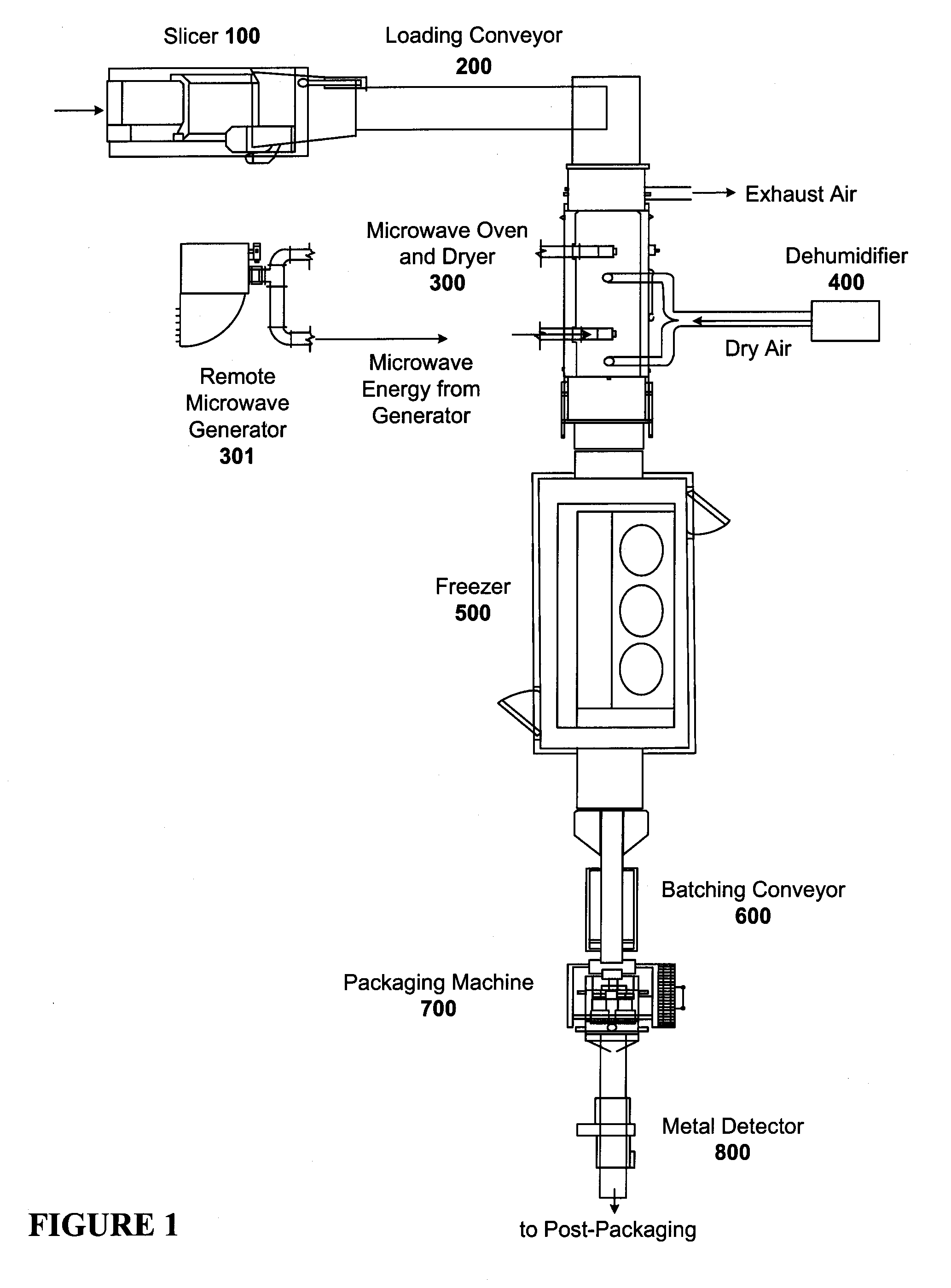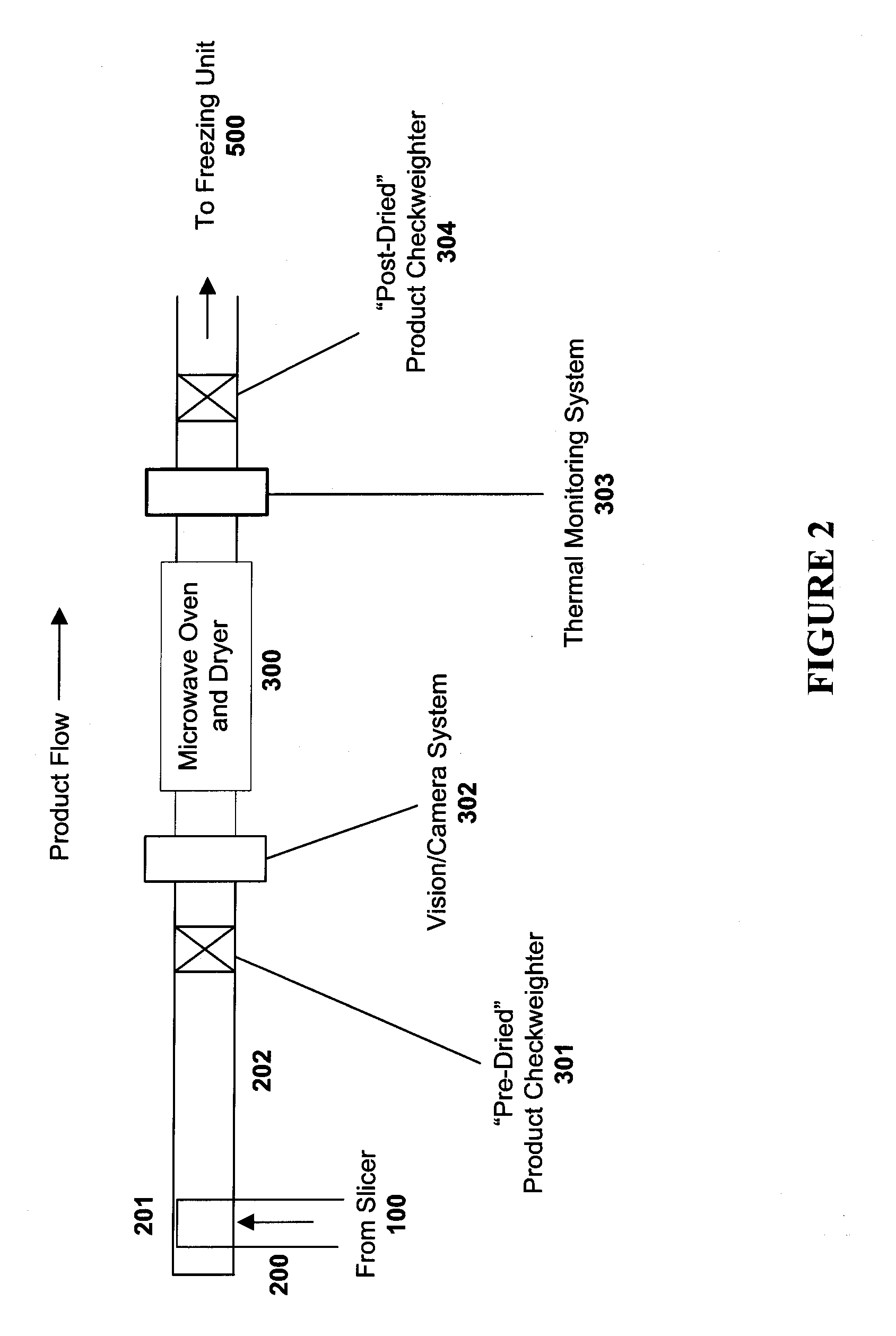Process and Apparatus for Rapid Preparation of Dry Sausage
a technology of dry sausage and processing equipment, which is applied in the direction of meat mixing equipment, food preparation, meat/fish preservation by drying, etc., can solve the problems of requiring a tremendous amount of product to be held, limited production capacity of a manufacturing facility, and high processing cost, so as to reduce the overall processing time for making dry sausage and reduce the overall processing time , the effect of increasing the flowability of the resulting produ
- Summary
- Abstract
- Description
- Claims
- Application Information
AI Technical Summary
Benefits of technology
Problems solved by technology
Method used
Image
Examples
example 1
[0086]A process for the production of dry sausage was tested. The process provided rapid drying of fermented and heat treated meat to produce dry sausage such as Genoa salami and pepperoni. Drying was accomplished by slicing the product and using a combination of microwave energy and conditioned air as described herein.
Equipment
[0087]The following equipment was used: (a) WEBER® 402 slicer; (b) AMtek® Microwave oven, 1 cavity, outfitted with supply and exhaust air. Dimensions: 120 in long by 48 in. wide. One microwave transmitter feeding the cavity was the set up; and (c) AIR LIQUIDE® Nitrogen Chamber (for product chilling).
Summary
[0088]The product produced closely matched the desired yield parameters (e.g., 18% drying loss for Genoa salami and 22% for pepperoni) and the slices were 1.1 mm thick (prior to drying) using the following conditions:
TABLE 1Micro-waveBelt SpeedPowerSupplyProductSlicer(in / min)(kW)ExhaustAirGenoa3 logs3631 fan on nearest1 fan onsalamiacross(residencefeed end ...
example 2
[0092]The use of microwaves to dry sausage presents a challenge because microwaves work by exciting water molecules which creates heat. The goal was to warm the product in order to get the moisture to release, but the microwave energy can also concentrate on the product (e.g., “the hot spot phenomena”). This hot spot issue will cause the fat to melt, and make holes appear in the product, which is detrimental to appearance, and would not be appealing to consumers. This is what happened during the First Trial. This was overcome this by using cooler air and also pulsing the microwave energy (e.g., an on / off cycle where the microwave energy is on for X seconds and off for Y seconds).
[0093]The inventors also surprisingly discovered that the process to create the raw meat block affected the final product. By changing the process from blending then grinding to grinding then blending, the overall quality of the product was unexpectedly improved. This was contrary to the traditional process ...
example 3
[0107]A third run was performed, again using the WEBER® 402 slicer and a dryer unit comprising an AMtek® Microwave single-cavity oven and supply and exhaust air provided by a Bry Air dehumidifier using a cooling coil / condenser to dry the air. The slices were distributed across the full width of the belt manually by two operators, but automated systems are expected to provide similar results. The microwave cavity was twelve feet long with a 48 inch wide conveyor belt. The cavity included six openings for air supply and exhaust (three on top arranged along the length of the belt, and three on the bottom arranged along the length of the belt). The openings could be selectively attached to hoses to introduce and exhaust the drying air. Various airflow patterns were found to be useful to dry the air. In one particular arrangement, the four downstream openings were used to introduce air, and the two upstream openings were used to exhaust air.
[0108]Using this setup, pepperoni slices were p...
PUM
 Login to View More
Login to View More Abstract
Description
Claims
Application Information
 Login to View More
Login to View More - R&D
- Intellectual Property
- Life Sciences
- Materials
- Tech Scout
- Unparalleled Data Quality
- Higher Quality Content
- 60% Fewer Hallucinations
Browse by: Latest US Patents, China's latest patents, Technical Efficacy Thesaurus, Application Domain, Technology Topic, Popular Technical Reports.
© 2025 PatSnap. All rights reserved.Legal|Privacy policy|Modern Slavery Act Transparency Statement|Sitemap|About US| Contact US: help@patsnap.com



